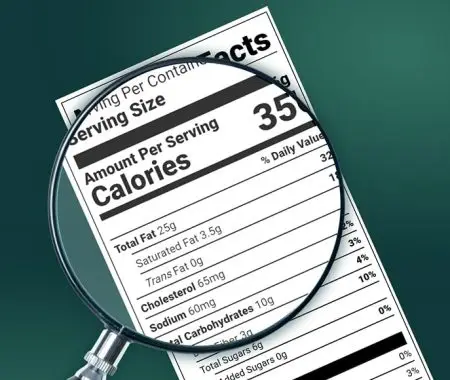Navigating the intricate landscape of FDA regulations, especially when it comes to determining serving sizes on nutrition labels, can often feel like a daunting task. The FDA meticulously regulates serving sizes to ensure consistency and clarity for consumers. With a myriad of guidelines, categorizations based on physical state and use, and stipulations, it’s easy to feel overwhelmed. If you’ve ever found yourself pondering, “How to determine serving size for my product?”, you’re not alone.
This article is designed to simplify the process for you. Using a step-by-step approach, we’ll guide you through the essentials of determining serving sizes, ensuring that your product aligns seamlessly with FDA standards.
Definition of Serving Size
When diving into the intricacies of a nutrition facts label, the serving size is one of the first elements you’ll encounter. Positioned prominently at the top, it provides a clear indication of the quantity considered a single serving for that particular product.
But how to determine serving size effectively? The label typically presents the serving size in familiar household measurements, such as cups, tablespoons, or slices. This is then followed by the metric equivalent, usually in grams (g). By understanding this foundational aspect, you’re better equipped to gauge the nutritional value of what you consume.
Step 1: Identify the Product Type
Before you can determine the serving size, it’s essential to recognize the type of product you’re dealing with. The FDA categorizes products based on their physical state (liquid, powder, etc.) and their use (e.g., main dish, side dish). Products can also be practically categorized into discrete units (individual items like cookies or crackers), bulk items (like flour or juice), or divided products (like a pizza or pie). Each category has its unique approach to determining serving size.
See How FoodLabelMaker Can Help You
Step 2: Refer to the RACC (Reference Amounts Customarily Consumed)
The FDA provides a detailed list of RACC (Reference Amounts Customarily Consumed) values for different food categories. These values serve as a benchmark for determining serving sizes. For discrete units, if your product’s customarily consumed quantity is similar to the RACC, then that becomes your serving size. For bulk items, the RACC value will guide you on the typical amount a person would consume in one sitting. Divided products might require more calculation, so you would have to divide the total product by the RACC value to determine the serving size. For a more detailed understanding, consider referring directly to the FDA’s list of RACC values.
Step 3: Adjust for Practicality and Familiarity
While RACC values are a great starting point, the FDA also emphasizes the importance of practical serving sizes. For instance, if the RACC for a cookie is 30g, but each of your cookies weighs 40g, it makes more sense to list one cookie as a serving rather than suggesting a fraction of a cookie. Always aim for clarity and ease of understanding for the consumer.
In summary, determining serving size isn’t just about adhering to regulations; it’s about presenting clear, practical information to consumers. By understanding the type of product, referring to RACC values, and adjusting for practicality, you can ensure your product’s nutrition label is both compliant and user-friendly.
Incorporating Serving Size on Your Nutrition Facts Panel
Once you’ve deciphered how to determine serving size for your product, the next pivotal step is seamlessly integrating this information into your Nutrition Facts Panel. This is not just a regulatory requirement but also a valuable tool that aids consumers in making informed dietary choices.
Positioning on the Label
The serving size is typically one of the first pieces of information a consumer will see on a Nutrition Facts Panel. It’s strategically placed at the top, ensuring immediate visibility. Directly below the bolded “Serving Size” descriptor, you’ll find the specific serving size for the product, first in a familiar household measurement and then in its metric equivalent (grams).
Aligning with Other Nutritional Information
It’s essential to ensure that all other nutritional information on the label corresponds with the serving size you’ve determined. For instance, if your label states that there are 150 calories per serving, this should align with the serving size you’ve listed. Misalignment can lead to confusion for consumers and potential regulatory issues.
Multiple Servings in One Package
If your product contains multiple servings, it’s crucial to clearly indicate both the nutritional information per serving and the total nutritional content for the entire package. This dual-column approach has become more common, especially with the FDA’s recent labeling updates, as it provides consumers with a clearer understanding of their intake, whether they consume one serving or the entire package.
Regular Updates and Reviews
The process of determining and listing serving size isn’t a one-time task. As you tweak your product’s formulation or as new research emerges, serving sizes might need adjustments. Regularly reviewing and updating your Nutrition Facts Panel ensures ongoing compliance and clarity for consumers.
Incorporating the serving size into your Nutrition Facts Panel is a blend of regulatory adherence and consumer-centric clarity. By understanding how to determine serving size and presenting it effectively on your label, you meet FDA requirements and empower consumers with the information they need to make health-conscious choices.



